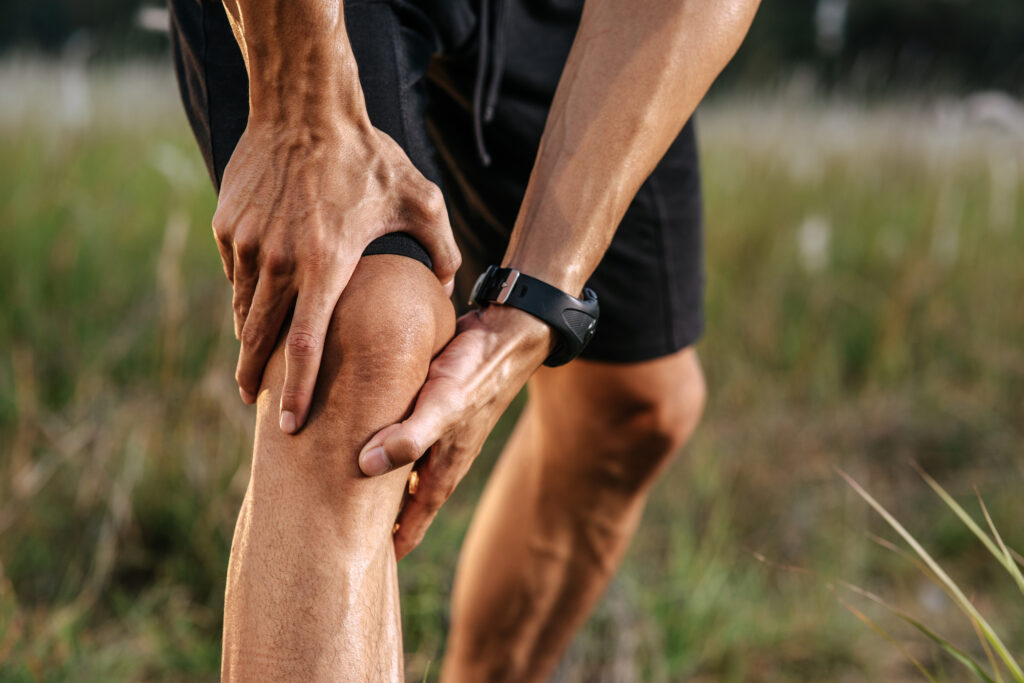When you think about pain relief and wellness, have you considered how a holistic approach might reshape your experience? By focusing on the connections between your body, mind, and spirit, you can uncover deeper insights into the root causes of your discomfort. Techniques like mindfulness and acupuncture not only address symptoms but also encourage natural healing. As you begin to explore these methods, you'll find that personalizing your wellness journey can lead to unexpected revelations about your overall well-being. The question is, how do you start integrating these practices into your daily life?
Understanding Holistic Health
Holistic health emphasizes the interconnectedness of your body, mind, and spirit, recognizing that each aspect plays an essential role in your overall well-being. Instead of tackling symptoms in isolation, holistic health encourages you to explore the root causes of your issues. This often means examining lifestyle choices, emotional health, and spiritual beliefs, showing you how they intertwine to affect your physical health.
When you adopt a holistic approach, you start by evaluating your entire lifestyle. Consider your diet, exercise routine, stress levels, and sleep patterns. All these factors contribute to how you feel both mentally and physically. For example, poor nutrition can lead to fatigue, which may impact your mood and motivation, creating a cycle that's hard to break.
Moreover, emotional well-being is just as crucial. If you're carrying unresolved stress or anxiety, it can manifest in physical pain or discomfort. By addressing these emotional components, you can create a more balanced state of health. Practices like mindfulness, meditation, or even talking with a therapist can help you process these emotions effectively.
Finally, don't forget the spiritual aspect. This doesn't necessarily mean religious beliefs; it can also involve finding meaning and purpose in your life. Engaging with activities that nourish your spirit, whether through art, nature, or community, can enhance your overall health.
Benefits of Holistic Pain Relief
When you explore holistic pain relief, you'll discover natural healing methods that promote overall well-being.
By focusing on the mind-body connection, you can enhance your body's ability to heal itself.
Plus, personalized treatment plans cater to your unique needs, ensuring a more effective approach to managing pain.
Natural Healing Methods
Natural healing methods offer a rejuvenating alternative for those seeking effective pain relief without the side effects often associated with conventional treatments. These approaches emphasize the body's innate ability to heal itself, promoting overall wellness.
You might find that techniques such as acupuncture, herbal remedies, and massage therapy can greatly alleviate pain and enhance your quality of life.
Acupuncture, for instance, involves inserting fine needles into specific points on your body, which can help release endorphins and reduce inflammation.
Herbal remedies, like turmeric and ginger, are known for their anti-inflammatory properties and can be easily incorporated into your diet.
Massage therapy not only relaxes your muscles but also improves circulation, helping to ease tension and discomfort.
Additionally, practices like yoga and tai chi promote gentle movement and stretching, which can be beneficial for chronic pain management.
#
Mind-Body Connection
The mind-body connection plays a significant role in how you experience and manage pain. This connection emphasizes that your thoughts, emotions, and physical sensations are deeply intertwined. When you're stressed or anxious, your body tenses up, which can heighten your perception of pain. Conversely, when you cultivate a positive mindset and practice relaxation techniques, you may find that your pain decreases.
Engaging in mindfulness practices, such as meditation or deep-breathing exercises, can enhance your awareness of this connection. These techniques help you focus on the present moment, allowing you to observe your pain without judgment. By doing so, you create space for healing and reduce the pain's intensity.
Additionally, positive affirmations and visualizations can shift your mental state, promoting a sense of control over your pain. When you believe you can alleviate your discomfort, you're more likely to take proactive steps toward recovery.
Ultimately, embracing the mind-body connection empowers you to approach pain relief holistically. By addressing both your mental and physical well-being, you can foster a more balanced and resilient response to pain, leading to improved overall wellness.
Personalized Treatment Plans
Creating a personalized treatment plan is essential for effective holistic pain relief. When you tailor your approach to your specific needs, you're more likely to experience lasting results. Holistic methods consider not just the physical symptoms but also your emotional and mental well-being. By identifying the root causes of your pain, you can target your treatment effectively.
You'll want to start by evaluating your lifestyle, medical history, and personal preferences. Collaborating with healthcare professionals who specialize in holistic therapies, such as acupuncture, yoga, or nutrition, can lead to a more thorough plan. This approach enables you to incorporate various modalities that resonate with you, enhancing your overall wellness.
Moreover, a personalized plan allows for flexibility. As you progress, you can adjust your treatments based on your responses, ensuring that your pain relief remains effective. You'll find that by addressing the whole person—body, mind, and spirit—you're more likely to achieve sustainable pain management.
Ultimately, investing time in a personalized treatment plan empowers you to take charge of your health, leading to improved quality of life and well-being. Embrace this journey for a more holistic approach to pain relief.
Common Holistic Techniques
When it comes to holistic pain relief, several techniques can help you find comfort.
You might explore mindfulness and meditation practices, try herbal remedies, or consider acupuncture and energy healing.
Each method offers unique benefits, so let's look at how they can work for you.
Mindfulness and Meditation Practices
Mindfulness and meditation practices offer powerful tools for managing pain and enhancing overall well-being. By focusing your attention on the present moment, you can create a sense of calm and reduce stress, which often exacerbates physical discomfort.
When you practice mindfulness, you become more aware of your thoughts and feelings without judgment, allowing you to respond to pain with greater clarity and resilience.
Start by setting aside a few minutes each day to engage in meditation. Find a quiet space, sit comfortably, and concentrate on your breath. As thoughts arise, acknowledge them and gently return your focus to your breathing. This practice can help you cultivate a sense of detachment from pain, reducing its intensity.
Incorporating mindfulness into your daily routine can also be beneficial. Whether you're eating, walking, or simply sitting, try to remain present and fully engaged in the activity.
This awareness can help you manage pain more effectively, as you learn to recognize and respond to discomfort without becoming overwhelmed. Over time, these techniques can foster a deeper sense of peace and improve your overall quality of life.
Herbal Remedies for Relief
Herbal remedies can serve as effective allies in your quest for pain relief, offering natural alternatives to conventional medications. You might consider using turmeric, known for its anti-inflammatory properties, which can help alleviate joint pain.
Incorporating ginger into your diet can also provide relief, as it's recognized for reducing muscle soreness and inflammation. Another option is willow bark, often used as a natural pain reliever, especially for headaches and lower back pain.
If you're dealing with anxiety-related pain, chamomile tea can help soothe both your mind and body. You might also explore the benefits of peppermint, which can ease tension headaches and muscle aches when applied as an essential oil or used in a tea.
Don't forget about the power of CBD oil, derived from hemp, which has gained popularity for its potential to reduce chronic pain and inflammation without the psychoactive effects of THC.
Always consult a healthcare professional before starting any herbal regimen, as some herbs may interact with medications you're currently taking. By integrating these herbal remedies into your routine, you can enhance your pain relief strategy naturally and effectively.
Acupuncture and Energy Healing
Acupuncture and energy healing are powerful holistic techniques that can greatly enhance your pain relief journey.
Acupuncture involves inserting thin needles into specific points on your body. This practice stimulates your body's natural healing response, promoting balance and alleviating pain. Many find relief from chronic pain, migraines, and stress through this ancient practice.
Energy healing, on the other hand, focuses on channeling energy to restore harmony within your body. Techniques like Reiki or Therapeutic Touch can help release blocked energy and facilitate healing. You may experience deep relaxation, emotional release, and improved well-being during these sessions.
Both methods encourage you to engage in self-care and connect with your body's innate wisdom.
As you explore these holistic approaches, consider consulting a certified practitioner to guide you. They can tailor your treatment to your specific needs, ensuring an effective experience.
Integrating Practices Into Daily Life
Incorporating holistic practices into your daily routine can transform how you manage pain. Start by setting aside a few minutes each day for mindfulness or meditation. This practice helps center your thoughts, reduces stress, and can even lessen feelings of pain. You don't need to block out an hour; even five to ten minutes can make a change.
Next, consider adding gentle movement to your day. Activities like yoga or tai chi promote flexibility and strength while easing tension. Find a class in your area or use online resources to guide you. Make it a habit to engage in these movements a few times a week.
Nutrition plays an essential role in your overall wellness too. Focus on a balanced diet rich in anti-inflammatory foods, such as fruits, vegetables, whole grains, and healthy fats. Meal prepping can simplify this process, ensuring you always have wholesome options available.
Don't overlook the power of breathwork. Taking a few moments to practice deep breathing can help you relax during tense moments and greatly reduce your perception of pain. Try inhaling deeply for a count of four, holding for four, and exhaling for four. Repeat this several times whenever you feel discomfort.
Lastly, maintain a supportive environment. Surround yourself with positive influences, whether that's friends, family, or community groups that share your wellness goals.
Together, these practices can create a holistic approach to pain management that becomes a seamless part of your life.
## Mind-Body Connection
Understanding the mind-body connection can greatly enhance your pain relief journey. This connection emphasizes the powerful interplay between your thoughts, emotions, and physical sensations. When you recognize how your mental state influences your body, you can adopt strategies that promote healing and well-being.
Here are some key aspects to reflect upon:
- Emotional Awareness: Pay attention to how your emotions affect your pain perception. Stress and anxiety can amplify discomfort, while positive emotions may help alleviate it.
- Mindfulness Practices: Incorporate mindfulness techniques like meditation or deep breathing. These practices can help you stay present and reduce stress, leading to a decrease in pain levels.
- Visualization: Use imagery to envision healing and comfort. Visualizing a pain-free state can create a positive mindset that supports your body's natural healing processes.
- Physical Activity: Engage in gentle movement or exercise that you enjoy. Regular physical activity can boost your mood and help reduce pain, fostering a stronger mind-body connection.
- Self-Compassion: Be kind to yourself. Acknowledging your pain without judgment can foster emotional healing, which in turn can impact your physical state positively.
Personalizing Your Wellness Journey
Personalizing your wellness journey is vital for effectively managing pain and enhancing your overall health. Everyone's experience with pain is unique, influenced by individual lifestyles, genetics, and emotional states. To tailor your approach, start by evaluating your specific needs.
Take time to reflect on what triggers your pain and what alleviates it. Keeping a journal can help track patterns and identify effective strategies.
Next, explore various holistic practices that resonate with you. Techniques like yoga, meditation, acupuncture, or herbal remedies may work wonders, but they won't all suit your preferences or circumstances. Experiment with different methods, and don't be afraid to combine them.
For instance, pairing mindfulness meditation with gentle stretching can enhance relaxation and reduce discomfort.
It's also important to contemplate your nutrition. A balanced diet rich in anti-inflammatory foods can support your body's healing processes. Listen to your body's signals and adjust your eating habits accordingly.
Don't forget the power of support networks. Whether it's friends, family, or support groups, connecting with others who understand your journey can provide motivation and encouragement.
Lastly, consult health professionals who specialize in holistic approaches. They can help create a personalized plan that aligns with your goals and preferences.
Conclusion
Embracing holistic approaches to pain relief and wellness can transform your journey toward better health. By recognizing the interconnectedness of your body, mind, and spirit, you can address root causes rather than just symptoms. Incorporating techniques like mindfulness, acupuncture, and herbal remedies allows you to tap into your body's natural healing abilities. Personalizing your treatment plan and building a supportive network will empower you to understand your unique pain experience and enhance your overall well-being.



